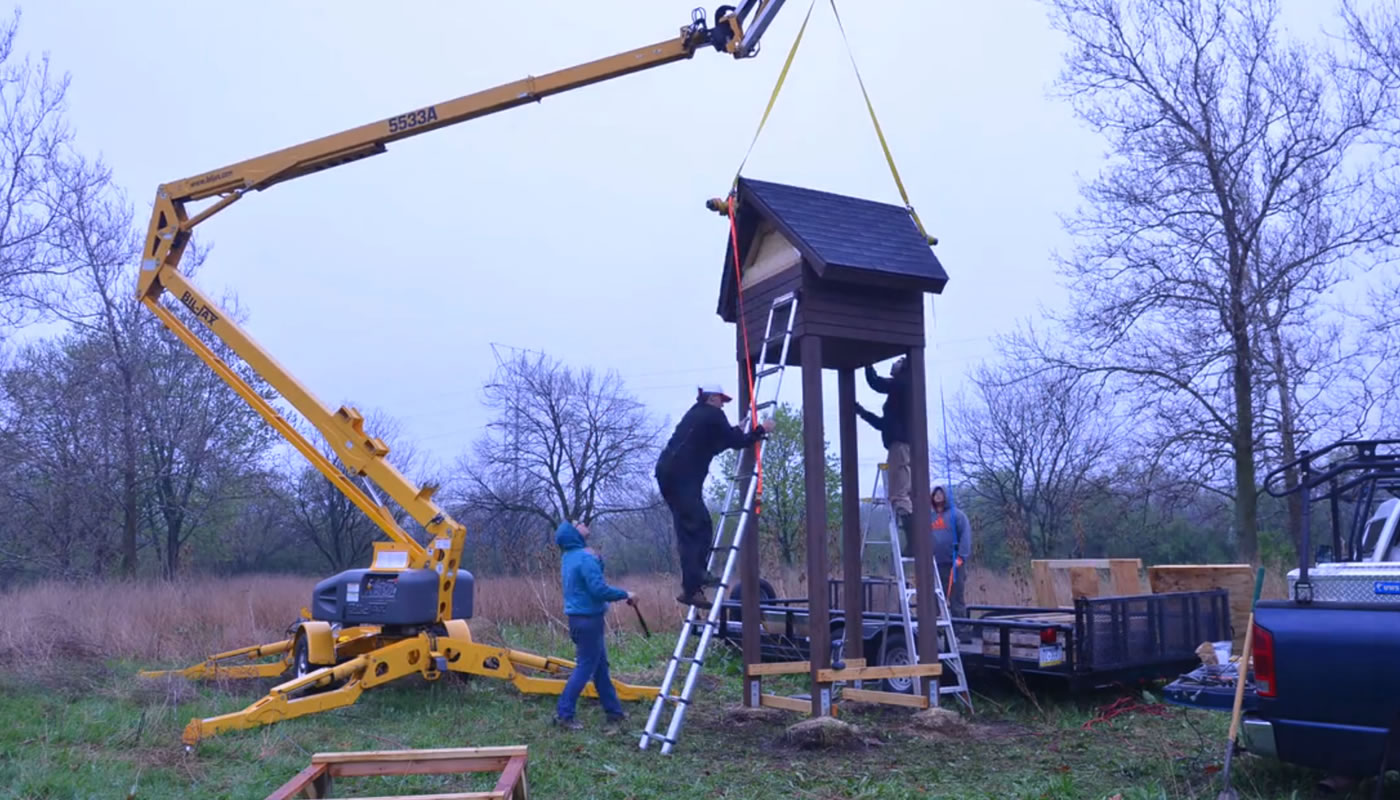Each time a mosquito buzzes by your ear this summer, consider the plight of our local bats. In Cook County all bats are insect eaters—a single half-ounce little brown bat can eat half its body weight in insects each night. Nursing females can consume their full body weight or more.
Unfortunately, bat populations throughout the world have been hit hard by habitat loss, pesticide use and white nose syndrome. That’s why last month Friends of the Chicago River, in coordination with the Forest Preserves, installed two bat “condos” (also known as maternity colonies) along the North Branch of the Chicago River to help our local bats. The project is part of a grant from an anonymous donor that will allow Friends to install four Osprey nesting platforms, restore 50 acres of turtle nesting habitat and install a total of six bat colonies over the next three years on Forest Preserves land.
“One of our foundational goals is to restore wildlife habitat in and along the Chicago/Calumet river system,” said Margaret Frisbie, Friends’ executive director. “We met with the Forest Preserves’ Resource Management staff in January 2013 and discussed which water-dependent local species could really benefit from straightforward habitat restoration or intervention. Each of these animals was missing sufficient reproductive habitat, something we could help provide fairly simply.”
That’s not to say the bat project has not had its challenges. “Only a few government agencies are doing this work in Illinois, so research, location scouting and deciding on the best design for the maternity colonies took some time,” Frisbie added. Forest Preserves staff provided understanding and plans for successful bat colony designs which led them to a company in Pennsylvania that had developed large maternity colonies with the Pennsylvania Game Commission. Each maternity colony has 64 cubic feet of interior space and can support up to 2,600 mother bats and their young.
“These structures are designed for bats that live in colonies. The most common local colonial bats, and the bats most likely to roost here, are big brown bats and little brown bats,” said Troy Showerman, resource project manager at the Forest Preserves. Showerman worked closely with Friends to scout locations that would provide everything the bats need to thrive in their new maternity colonies—open space away from people, abundant sunlight to keep the bats warm and proximity to a water source (where many insects carry out at least part of their life cycle).
Bats will begin to naturally use the colonies over time because they provide better habitat than many currently available options—like houses, often the only places humans encounter bats. Frisbie hopes the project will help clear up misconceptions people have about these important animals. “Bats actively avoid human contact when possible and provide an incredible service by consuming as many insects as they do,” she said. “I think people would prefer a healthy population of bats over mosquito abatement trucks spraying chemicals near their neighborhoods.”
Friends plans to install four more maternity colonies along the river over the next two years.
Want to help bats find suitable nesting sites? Or want to have bats help you control insect populations? Cook County is also home to solitary nesting bats that will use smaller backyard bat houses. Learn more about installing a house.

